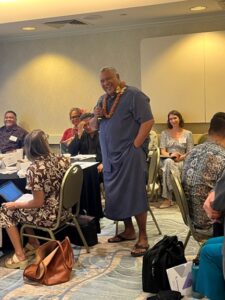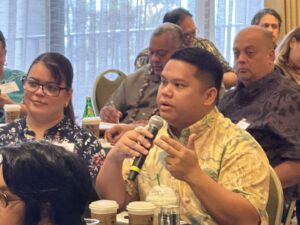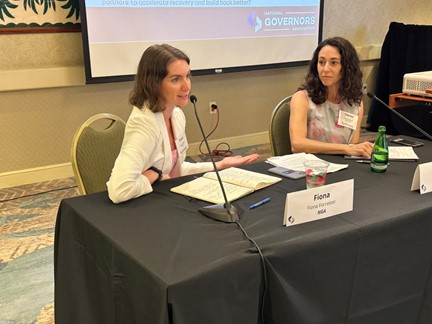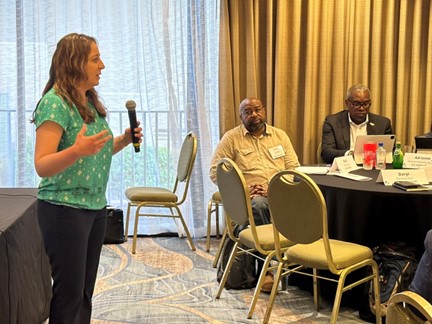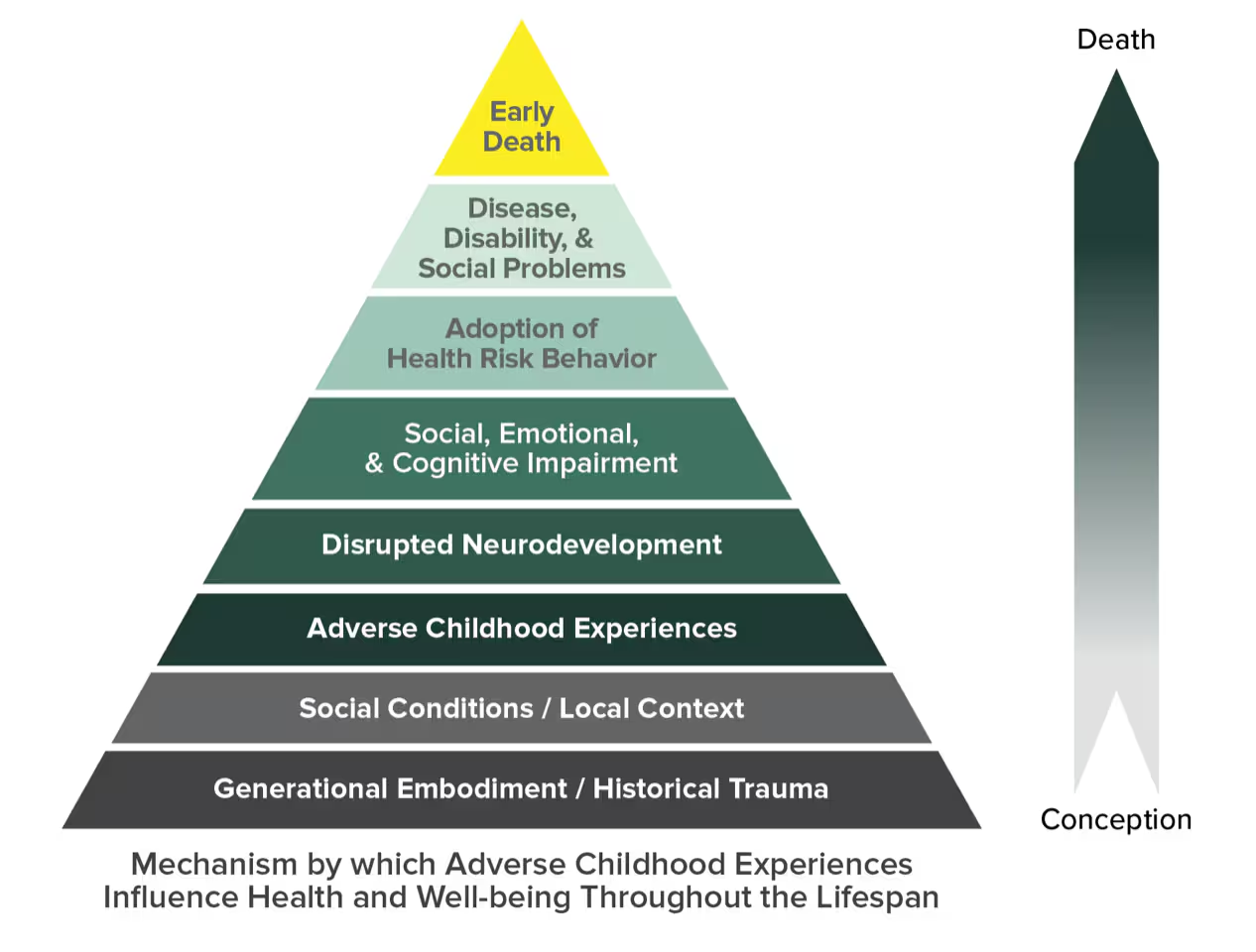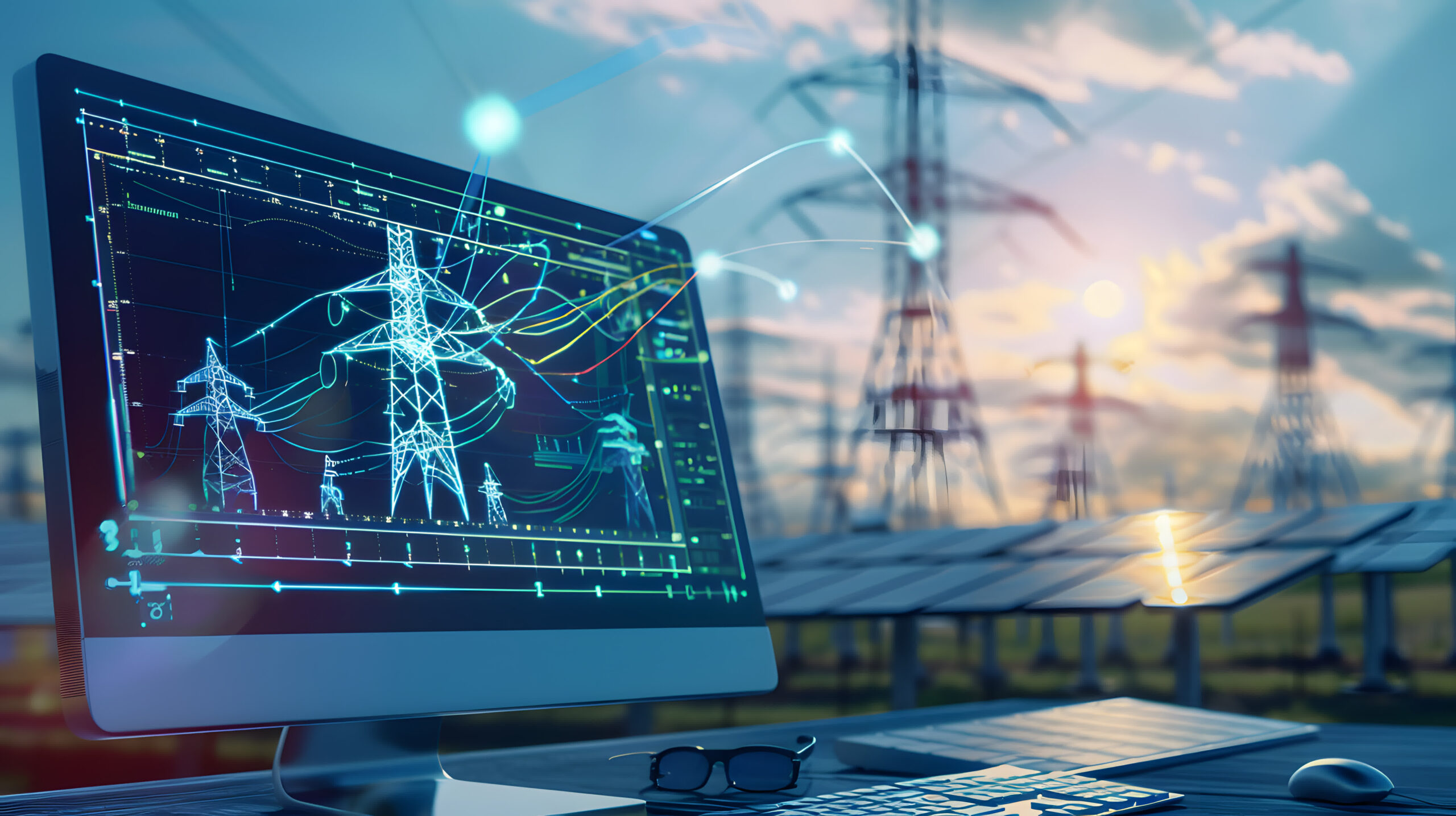Every aspect of modern life depends on a reliable, affordable supply of energy. Energy powers our telecommunications networks, fuels our vehicles, and keeps the lights on and equipment working at critical healthcare and public safety facilities. While the ubiquity of energy means it is often taken for granted, those who experience long outages or unaffordable bills know its importance all too well. This is even more the case for individuals living in islanded communities, as their geography increases both the threats to reliable energy and the potential impacts of an outage.
Energy resilience and security, and effective emergency response are priorities for all Governors, but those are particularly salient for Governors of America’s islanded territories and states. These communities are facing increasingly frequent and severe natural disasters – including 2023’s Typhoon Mawar and the 2024 Maui wildfires – and cyber threats from nation-state actors.
Further complicating energy resilience and emergency response, islanded communities face some of the highest energy costs in the country (nearly three times the national average in Hawai’i), limited and long supply routes, and space constraints that complicate the transition to alternative energy sources. Territorial and state Governors’ dedication and commitment to addressing these critical issues was on full display at the 2024 National Governors Association Roundtable on Energy Resilience and Security for Territories and Islanded Communities, held in Honolulu, Hawai’i, May 14-15.
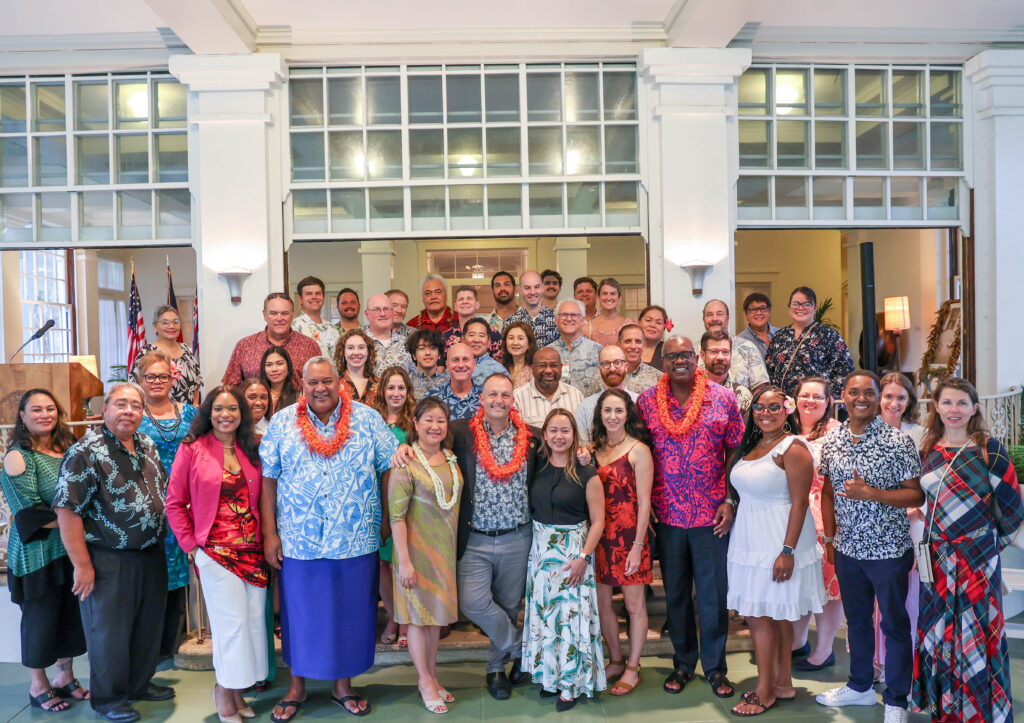
“We have a commitment to reliable energy in our state to support our military, to support our families, and to support everyone.”
Governor Josh Green
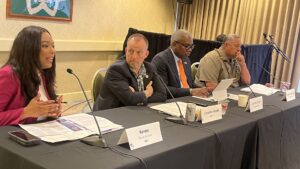
At this historic and first-of-its-kind event, Hawai’i Governor Josh Green hosted American Samoa Governor Lemanu Peleti Mauga and U.S. Virgin Islands Governor Albert Bryan Jr along with over 50 attendees from all five U.S. territories: American Samoa, the Commonwealth of the Northern Mariana Islands, Guam, Hawai’i, Puerto Rico, and the U.S. Virgin Islands. Territory and state teams included Governors and senior Governors’ office staff, energy office directors, homeland security advisors, emergency managers, territorial power authority leaders, and others. These territorial and state leaders were joined by federal partners for in-depth discussions on energy security, resilience, and emergency response, exploring shared challenges and highlighting best practices from across islanded communities that will help Governors address their communities’ needs.
Attendees engaged in dynamic discussions on the topics of:
- Threats to energy infrastructure and the unique energy challenges faced by territories and islanded communities;
- Investing in clean and resilient energy infrastructure
- Energy resilience and security planning to improve risk assessments, deploy resilient solutions, and accelerate emergency response;
- Cybersecurity for existing and new technologies;
- Timely public messaging and community engagement before and during energy emergencies;
- Cascading impacts of energy disruptions on telecommunications and other critical infrastructure systems; and
- Coordinated emergency management response, recovery, and restoration.
The meeting was funded by generous support from the U.S. Department of Energy’s Office of Cybersecurity, Energy Security, and Emergency Response (CESER), with officials from the Cybersecurity and Infrastructure Security Agency; Department of Energy; Department of Homeland Security; Department of the Interior; Environmental Protection Agency, Federal Communications Commission; Federal Emergency Management Agency; National Renewable Energy Laboratory and National Weather Service also participating.
The event culminated with each territorial and state team completing robust action plans – facilitated by National Governors Association experts – that will allow them to bring the best practices and solutions identified back to their home islands and effectuate meaningful improvements for their communities.

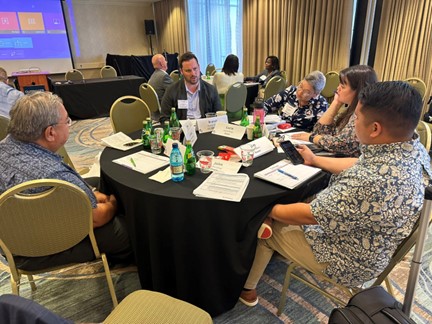

“Resilience starts in the home. If you have resilient people, you have resilient households. If you have resilient households, you have resilient communities. If you have resilient communities, you have resilient territories.”
Governor Albert Bryan
Planned discussions at the roundtable included:
Energy Security from the Perspectives of Islanded Communities – Leaders from all five territories and Hawai’i shared their perspective on the major threats to energy security facing their communities, including challenges unique to islanded communities and opportunities for building energy security and resilience through deliberate planning, policy, and investment.
Energy Security Threat Briefing – Bridget Bean, Assistant Director for the Integrated Operations Division, Cybersecurity and Infrastructure Security Agency gave an overview of the threat picture facing the energy sector, including the increased threats from geopolitical and non-state threats, natural disasters, cyber, and physical attacks.
Hawai’i Case Study Keynote: Investments in Resilience for Islanded Communities – Mark Glick, Chief Energy Officer, and Jon Chin, the Resilience, Clean Transportation, and Analytics Manager, of the Hawai’i State Energy Office discussed the Hawai’i Advanced Assistance Project, a risk assessment geospatial model that allows the state of Hawai’i to identify and mitigate risks to the energy system.
Investing in Energy Resilience in Islanded Communities – Francisco Berrios, Assistant Chief of Staff for Energy Affairs, Office of the Governor of Puerto Rico, provided an overview of Puerto Rico’s PR100 initiative with a special focus on grid resilience and emergency preparedness. Bobby Jeffers and Scott Haase from the National Renewable Energy Laboratory shared insights from on-the-ground grid resilience technical assistance to territory and utility leadership. Participants then shared best practices for investing in energy system resilience and infrastructure hardening.
Understanding State and Territory Roles in Addressing Cyber Threats to Energy Resilience – This session looked at cyber threats and vulnerabilities identified in the energy sector in the unique environment of islanded communities, including ongoing interest from nation-state actors, steps to strengthen resiliency, as well as cybersecurity best practices being implemented in states and territories. Bridget Bean, Assistant Director for the Integrated Operations Division, Cybersecurity and Infrastructure Security Agency, Jimmie Collins, Chief of Planning and Operations for the Hawai’i Office of Homeland Security, and Jon Cruz, Assistant General Manager of Engineering & Technical Services, Guam Power Authority shared their insights with the group.
Accelerating Emergency Response and Restoration for Remote Communities – Speakers Bob Fenton, Regional Administrator (Region 9), Federal Emergency Management Agency; Daryl Jaschen, Director, Virgin Islands Territorial Emergency Management Agency; and Vinnie Atofau Jr., Deputy Director of Homeland Security, Territorial Emergency Management Coordinating Office, American Samoa led a discussion on regularly analyzing energy needs pre-/post-incident, requesting resources through EMAC or federal agencies and maximizing their impact, and adapting energy restoration planning.
Emergency Recovery Considerations with Energy Investments – Cheree Peterson, Deputy Regional Administrator, U.S. Environmental Protection Agency discussed EPA’s role in the aftermath of the Maui Wildfires and emergency recovery considerations associated with the deployment of certain clean energy investments followed by a roundtable discussion on ways to increase resiliency in the energy sector when making investments to replace and repair infrastructure.
State & Territory Energy Security Planning and Resources from U.S. DOE – Brandi Martin, Assistant Director, Energy Security Policy & Partnerships, U.S. Department of Energy Office of Cybersecurity, Energy Security, and Emergency Response, spoke with attendees about energy security planning and resources from the U.S. Department of Energy, including those for state and territory Energy Security Planning.
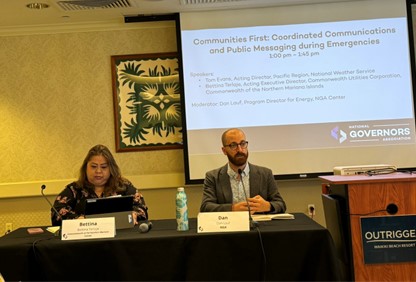
Coordinated Communications and Public Messaging during Emergencies – Timely and accurate communication with the public is crucial in the event of an energy emergency. State and territory teams discussed the importance of real-time and coordinated messaging to the public and external partners, with Tom Evans, Acting Director, Pacific Region, National Weather Service and Bettina Terlaje, Acting Executive Director of the Commonwealth Utilities Corporation of CNMI.
Cascading Effects of Energy Emergencies on Telecommunications – Debra Jordan, Chief of Public Safety and Homeland Security Bureau, Federal Communications Commission joined state and territory teams to discuss the impacts power outages can have on telecommunications systems and the solutions to connect and communicate during island-wide emergencies.
“The discussions held at the Energy Roundtable serve as a reminder that strengthening our island communities contributes to the resilience of the entire nation. I firmly believe that these conversations are crucial for addressing challenges unique to our communities, particularly in light of climate change impacts. Rising sea levels, extreme weather events, and shifts in rainfall patterns disproportionately affect Pacific Island territories like American Samoa. I express sincere gratitude to the National Governors Association and federal partners for facilitating this dialogue, as too often, our people and territories are excluded from discussions, particularly regarding climate change and resilience.”
Governor Lemanu Mauga
On the evening of Wednesday May 15, Hawai’i Governor and First Lady Green generously hosted US Virgin Islands Governor Bryan, American Samoa Governor Mauga, and all meeting participants at the Governor’s residence, Washington Place.
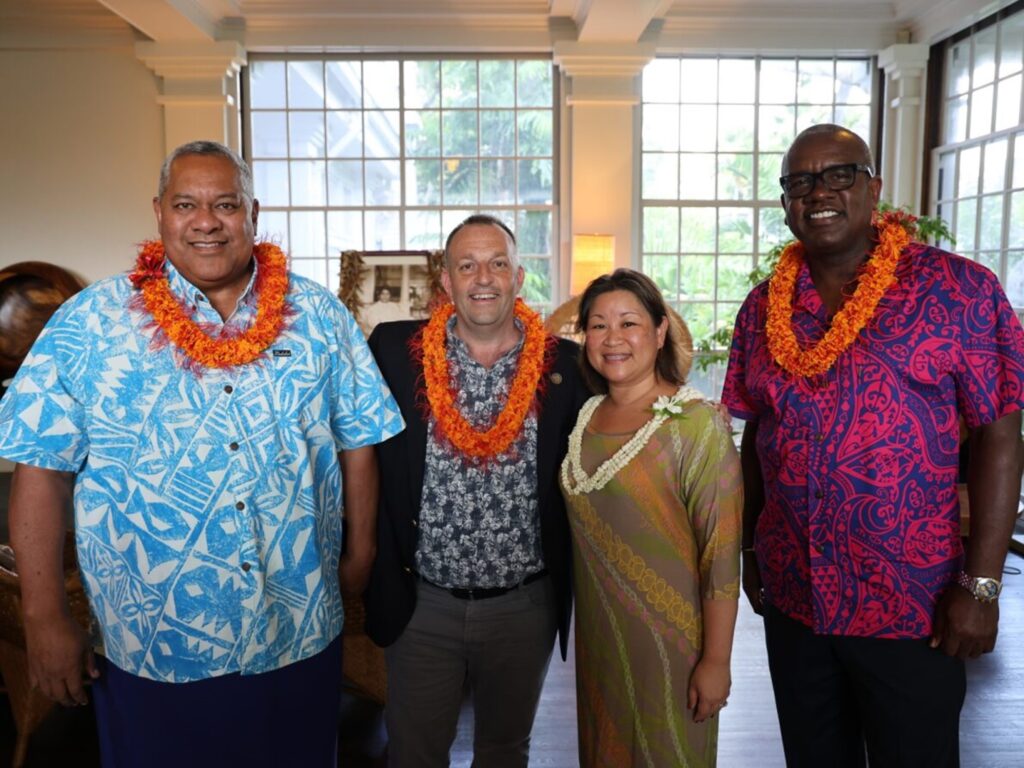
The meeting concluded with a site tour of the University of Hawaiʻi at Mānoa’s Laboratory for Advanced Visualization & Applications (LAVA Lab), hosted by the Hawai’i State Energy Office. Participants explored the Haven Energy Table at LAVA Lab, which uses large-scale data visualization to explore potential policy considerations and trade-offs on the timing and transition to various types of renewable energies, along with other advanced visualizations of energy systems across the Hawaiian Islands.
The Roundtable on Energy Resilience and Security for Territories and Islanded Communities was an impactful example of NGA’s commitment to effective collaboration between the territories, states, and federal partners. The event provided territorial and state leaders with a unique opportunity to coordinate and share practices from opposite sides of the globe, fostering improved planning and investment in resilience for islanded communities. These solutions will support Governors as they improve energy security, reduce costs, and create a more sustainable future for their communities.
For further details on lessons learned during this meeting, please contact Dan Lauf (dlauf@nga.org) and Jessica Davenport (jdavenport@nga.org).

